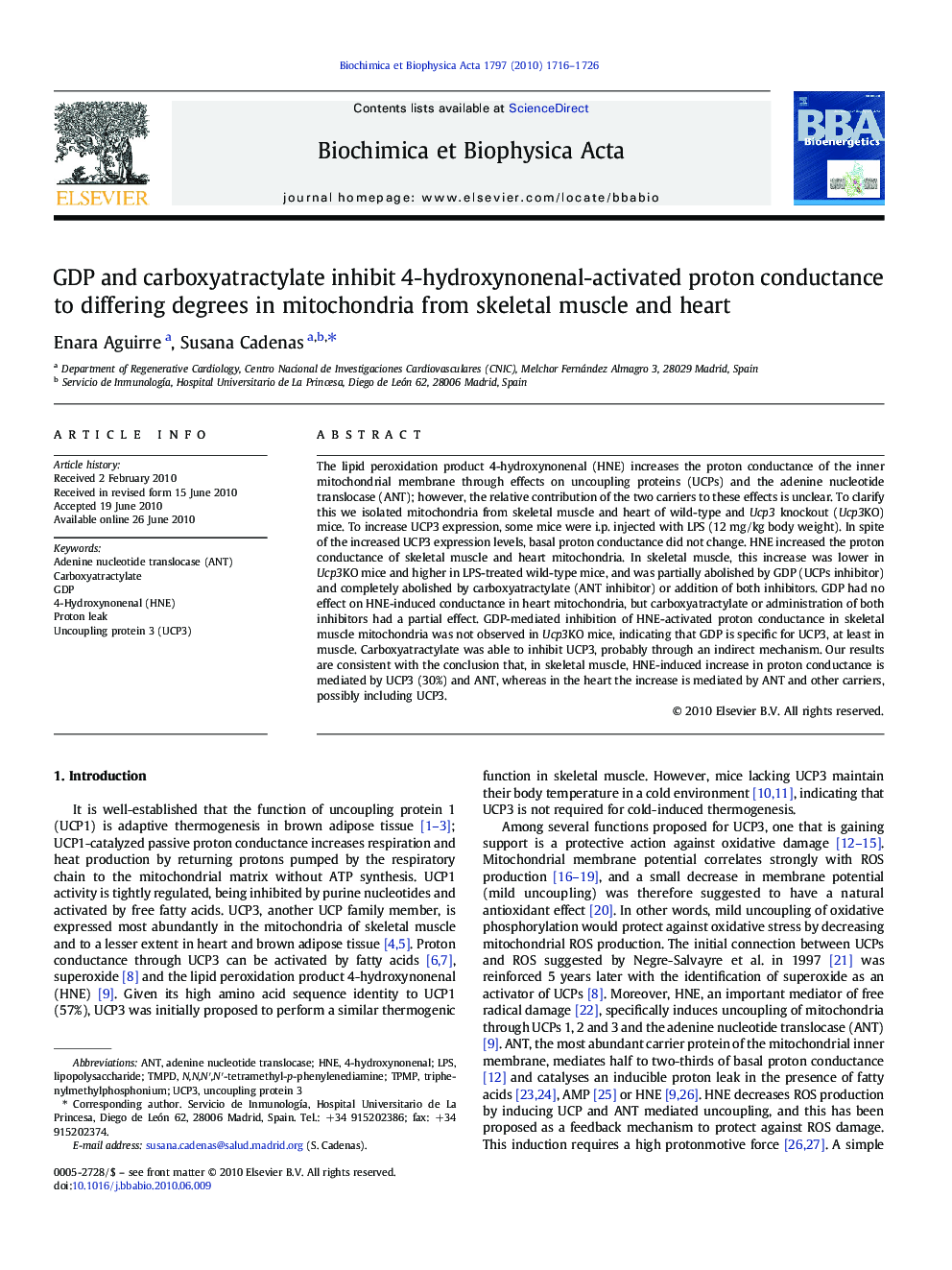| کد مقاله | کد نشریه | سال انتشار | مقاله انگلیسی | نسخه تمام متن |
|---|---|---|---|---|
| 1942760 | 1052627 | 2010 | 11 صفحه PDF | دانلود رایگان |
عنوان انگلیسی مقاله ISI
GDP and carboxyatractylate inhibit 4-hydroxynonenal-activated proton conductance to differing degrees in mitochondria from skeletal muscle and heart
دانلود مقاله + سفارش ترجمه
دانلود مقاله ISI انگلیسی
رایگان برای ایرانیان
کلمات کلیدی
LPS4-hydroxynonenalANTHNEUCP34-Hydroxynonenal (HNE)TMPDTPMPN,N,N′,N′-tetramethyl-p-phenylenediamine - N، N، N '، N'-tetramethyl-p-phenylenediamineadenine nucleotide translocase - ترانسکوز نوکلئوتید آدنینtriphenylmethylphosphonium - ترفنیل متیل فسفونیومGDP - تولید ناخالص ملیlipopolysaccharide - لیپوپلی ساکاریدProton leak - نشت پروتونUncoupling protein 3 - پروتئین جدا سازی 3Carboxyatractylate - کربوکسی کاتتریل
موضوعات مرتبط
علوم زیستی و بیوفناوری
علوم کشاورزی و بیولوژیک
دانش گیاه شناسی
پیش نمایش صفحه اول مقاله

چکیده انگلیسی
The lipid peroxidation product 4-hydroxynonenal (HNE) increases the proton conductance of the inner mitochondrial membrane through effects on uncoupling proteins (UCPs) and the adenine nucleotide translocase (ANT); however, the relative contribution of the two carriers to these effects is unclear. To clarify this we isolated mitochondria from skeletal muscle and heart of wild-type and Ucp3 knockout (Ucp3KO) mice. To increase UCP3 expression, some mice were i.p. injected with LPS (12Â mg/kg body weight). In spite of the increased UCP3 expression levels, basal proton conductance did not change. HNE increased the proton conductance of skeletal muscle and heart mitochondria. In skeletal muscle, this increase was lower in Ucp3KO mice and higher in LPS-treated wild-type mice, and was partially abolished by GDP (UCPs inhibitor) and completely abolished by carboxyatractylate (ANT inhibitor) or addition of both inhibitors. GDP had no effect on HNE-induced conductance in heart mitochondria, but carboxyatractylate or administration of both inhibitors had a partial effect. GDP-mediated inhibition of HNE-activated proton conductance in skeletal muscle mitochondria was not observed in Ucp3KO mice, indicating that GDP is specific for UCP3, at least in muscle. Carboxyatractylate was able to inhibit UCP3, probably through an indirect mechanism. Our results are consistent with the conclusion that, in skeletal muscle, HNE-induced increase in proton conductance is mediated by UCP3 (30%) and ANT, whereas in the heart the increase is mediated by ANT and other carriers, possibly including UCP3.
ناشر
Database: Elsevier - ScienceDirect (ساینس دایرکت)
Journal: Biochimica et Biophysica Acta (BBA) - Bioenergetics - Volume 1797, Issue 10, October 2010, Pages 1716-1726
Journal: Biochimica et Biophysica Acta (BBA) - Bioenergetics - Volume 1797, Issue 10, October 2010, Pages 1716-1726
نویسندگان
Enara Aguirre, Susana Cadenas,